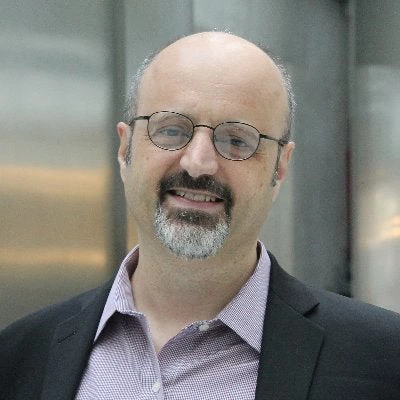As the United States prepares for its first presidential election after the Great Recession, inequality has emerged as a central political issue. This is not unremarkable: Americans have historically seemed much less troubled by income differences than, say, Europeans. You may remember a 2004 article by Alberto Alesina, Rafael di Tella and Robert MacCulloch in the Journal of Public Economics, which reported that happiness in the US was much less sensitive to inequality than in Europe. Whether or not that remains true today, the emergence of the Occupy Wall Street movement, talk of the 99% versus the 1%, and President Obama’s Kansas speech and State of the Union address all suggest that, at some point, inequality begins to matter. Even in the US...
In the last couple of weeks, the blogosphere has been abuzz with commentary on Alan Krueger’s (Chairman of the Council of Economic Advisers to the US President) excellent talk on “The Rise and Consequences of Inequality in the United States”, given at the Center for American Progress on January 12. Krueger’s central argument – that persistently rising income inequality is likely to lead to inequality of opportunity, and that this is bad news for the performance of the entire economy – has a familiar ring to development economists. A (five year-old) summary of arguments and evidence on how high inequality of opportunity hinders economic development can be found here.
Because economists from developing countries (and Europe) have long struggled with issues of inequality, growth and well-being, there may be some lessons from development economics and public economics (a field now seldom taught in US graduate programs, apparently) for the current US debate. Here are two.
One relates to the measurement of inequality of opportunity. Americans are clearly concerned about this. Alan Krueger opened his talk at the CAP by stating that the “theme in this talk is that the rise in inequality in the United States over the last three decades has reached the point that inequality in incomes is causing an unhealthy division in opportunities, and is a threat to our economic growth”. Yet he never provided a measure of inequality of opportunity. Like most US labor economists, he sought to gauge inequality of opportunity through measures of mobility.
True to the deeply American view that mobility matters more than inequality, a central feature of the current debate is what Krueger called the “Great Gatsby Curve”: the positive cross-country correlation between income inequality and inter-generational immobility. The concept seems to go back to a 2006 IZA discussion paper by Miles Corak, whose excellent recent blog has revisited it. Mobility matters a great deal, and it is evidently closely related to inequality of opportunity. But they are not the same thing. Intergenerational mobility is typically about how much your parents’ achievements help determine your own. Inequality of opportunity encompasses that, and more. Gender matters, as do race and disability. So does where you were born and went to school, for example.
There is a recent literature on measuring inequality of opportunity itself, which Krueger and others in the US might be interested in. It draws on early work by John Roemer (of Yale University) and Dirk van de Gaer (of the University of Ghent, in Belgium). There is plenty of arcane minutiae but, in a nutshell, inequality of opportunity can be measured as the share of overall inequality that is explained by pre-determined circumstances – things like race, gender, family background, place of birth, etc. Two recent papers that do this can be found here (for Italy, gated, ungated older version here) and here (for six Latin American countries, , gated, ungated older version here). The figure below, taken from a recent talk I gave at the Economic Research Forum in Cairo, illustrates the variation in this measure for a number of countries for which it has been computed. Inequality of opportunity ranges from about 3% of total inequality in Denmark, to about 50% in Guatemala. The US, tellingly, is not on the picture.
Yet, Krueger’s hypothesis that higher inequality of opportunity may hurt US economic growth has actually already been tested! In this discussion paper, Gustavo Marrero and Juan Gabriel Rodriguez, two Spanish economists, used Panel Study of Income Dynamics data to revisit the relationship between state-level inequality and growth in the US. There is no significant relationship when a measure of income inequality in each state is used. But when they decompose that inequality into an inequality of opportunity component and a residual, lo and behold, they find that higher inequality of opportunity is significantly associated with lower subsequent growth. It is an example of what I have earlier referred to as the ‘inequality as cholesterol’ hypothesis: there are good and bad kinds of inequality out there.
A second set of lessons from developing countries for the US inequality debate come from the actual experience of Latin American countries in the 2000s. During the last decade, income inequality fell in 13 of 18 countries for which data is available. And, as argued in an excellent recent book by Luis Felipe López-Calva and Nora Lustig, it did not happen by chance. Public policy played an active role, in at least two ways: a substantial expansion of secondary school enrollment about two decades ago has contributed to a decline in the skill premium among workers today. And large increases in redistributive cash transfers (including but not restricted to CCTs) have raised the incomes of the poor in many countries. This was also a decade during which Latin America grew faster than in the preceding twenty years, and its middle classes swelled. These are real-life examples, “just south of the border”, in support of Alan Krueger’s contention that public policy can indeed contribute to declining inequality, while arguably also promoting economic growth and a larger middle class.



Join the Conversation